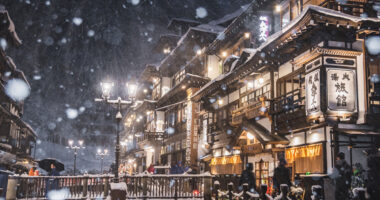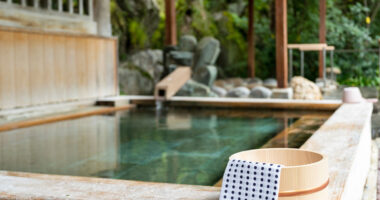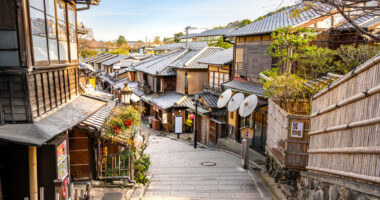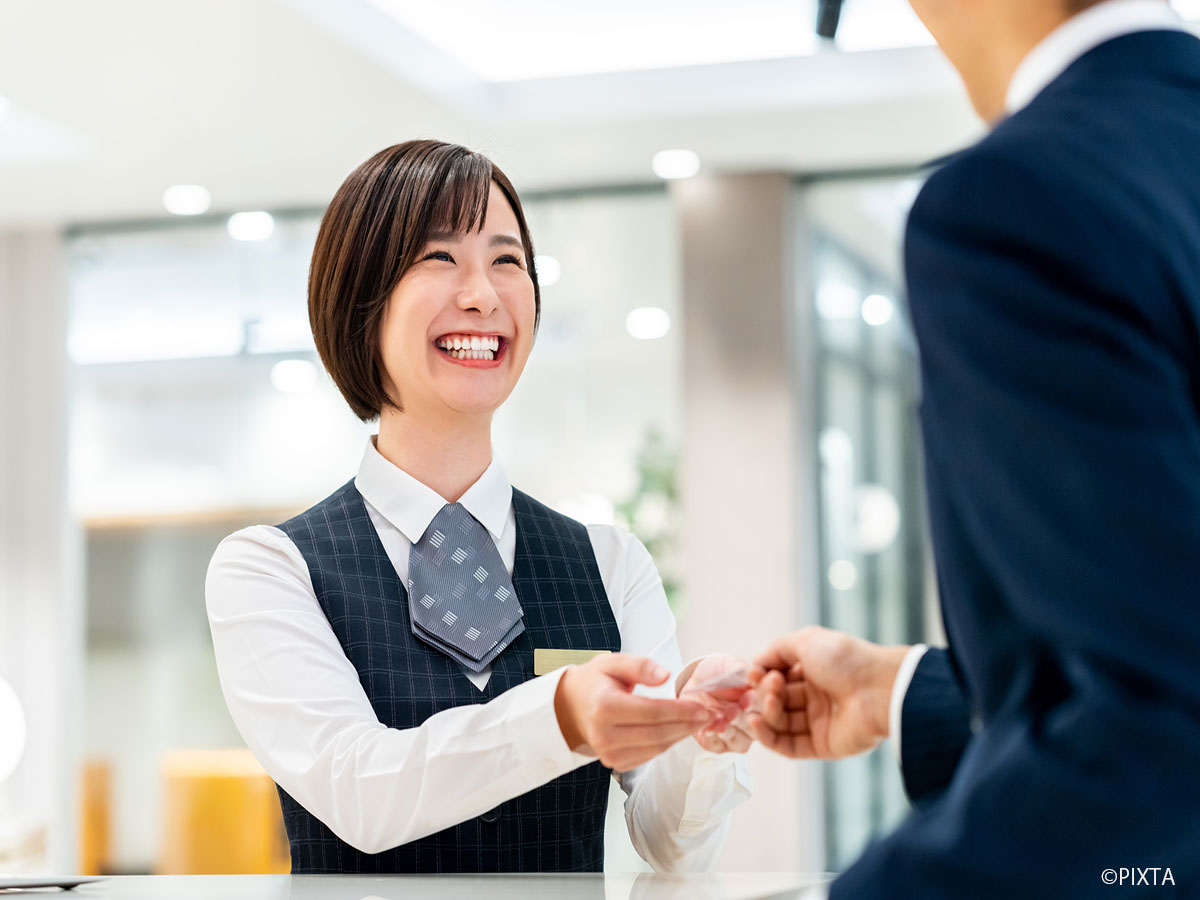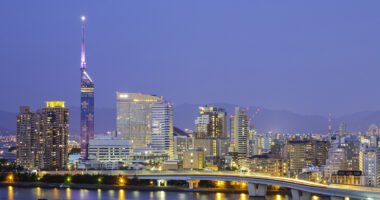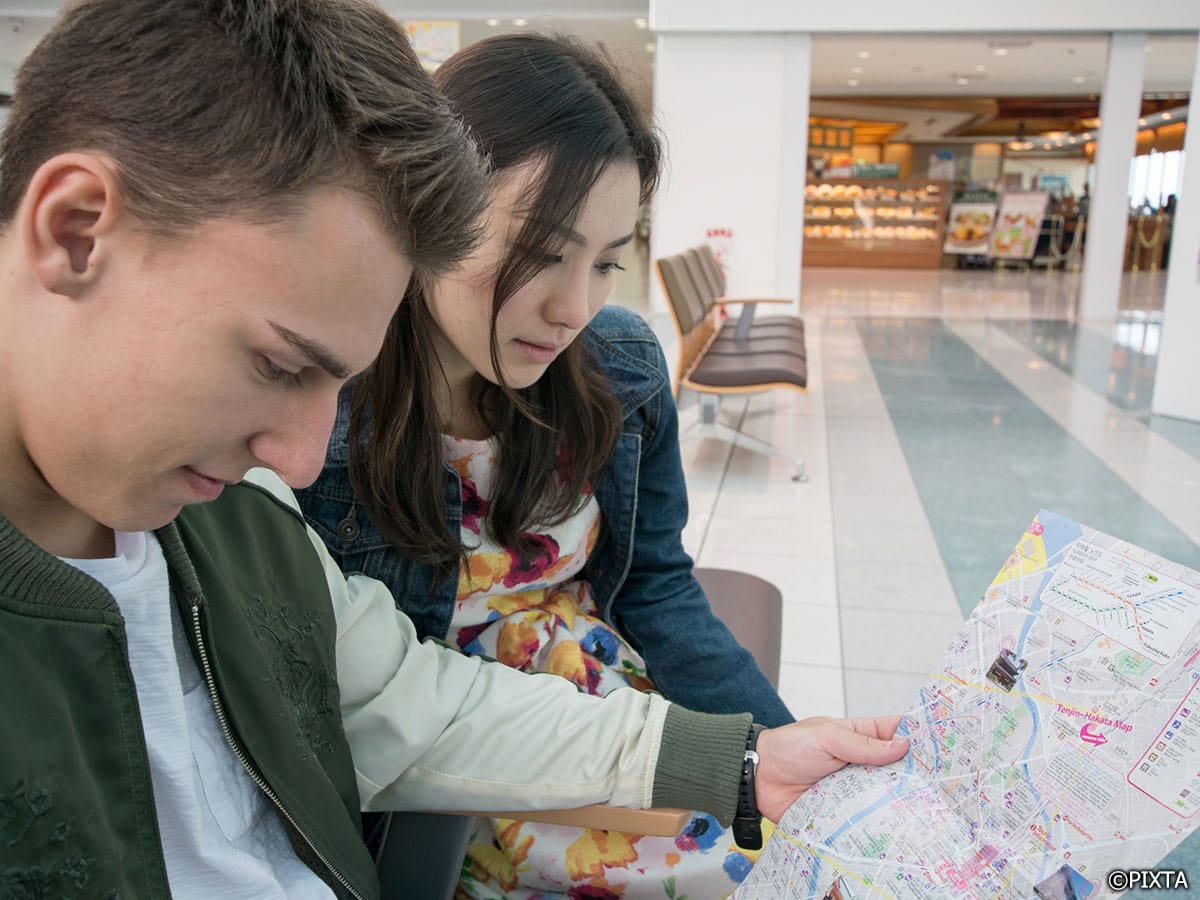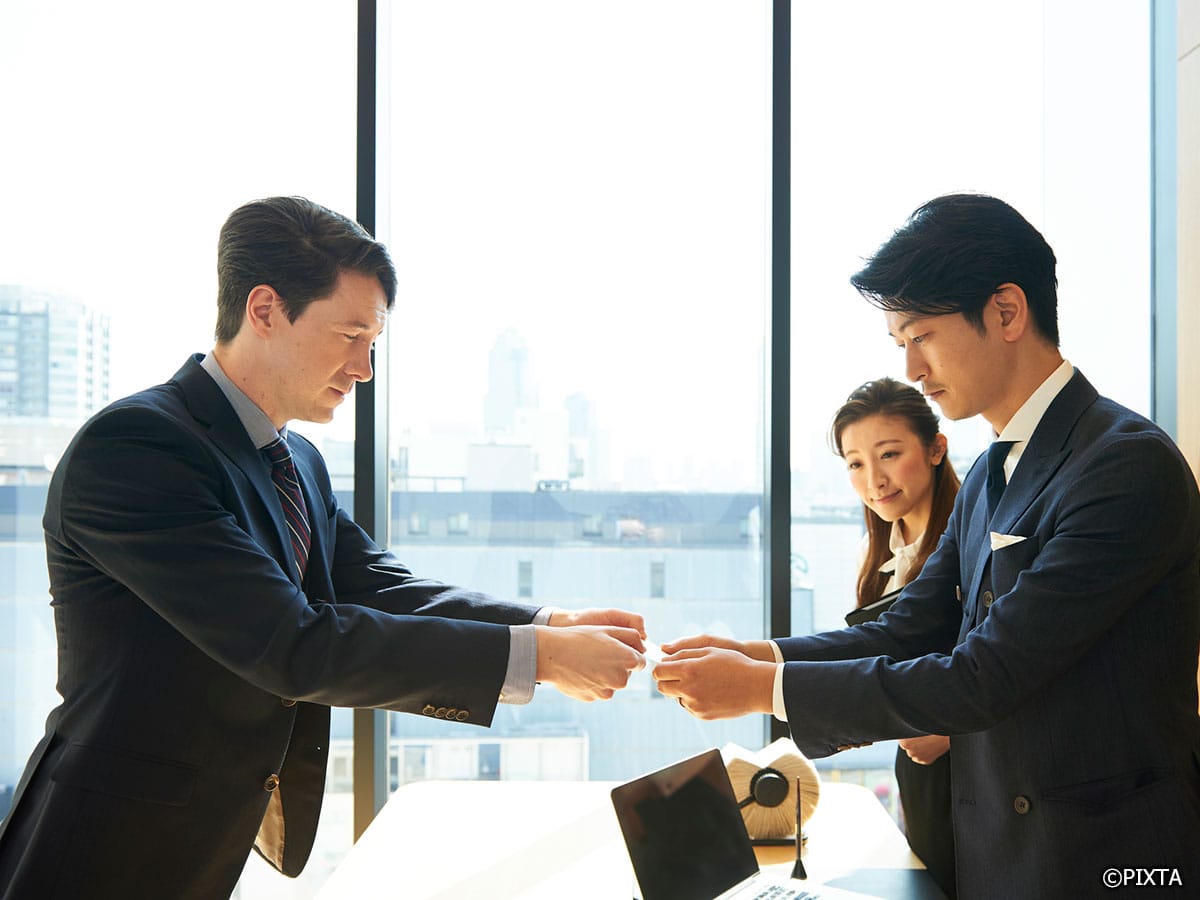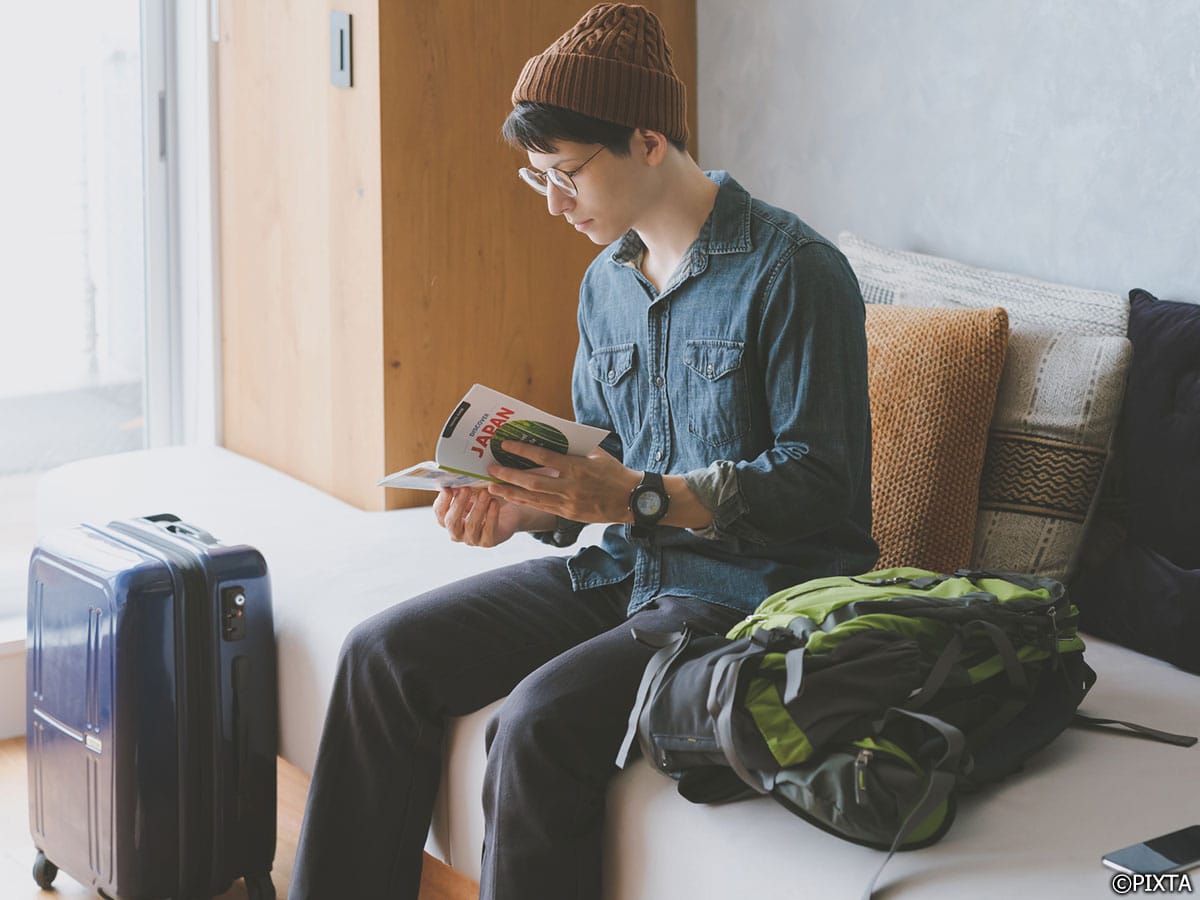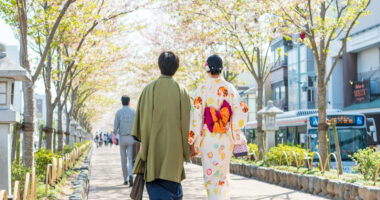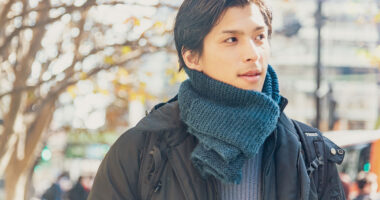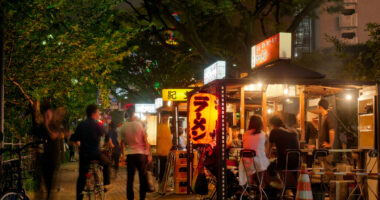Japan is a country where tradition and modernity exist in perfect harmony. Walk through the bustling streets of Tokyo, and you’ll see neon skyscrapers alongside ancient shrines. Visit Kyoto, and you’ll witness centuries-old teahouses next to contemporary cafés. Amidst this blend of old and new, one cultural treasure has remained timeless—the kimono for men.
While many associate the kimono with women, traditional kimono for men holds a distinct charm, symbolizing elegance, formality, and cultural pride. So, whether you’re exploring a historic district, attending a formal wedding ceremony, or simply embracing Japan’s rich aesthetic, wearing a kimono can transform your sightseeing experience into something extraordinary.
Read on to dive into kimono culture and history, explore different kimono essentials, and explore practical tips on renting and buying kimono for your travels.
What is a kimono?
The kimono is Japan’s most iconic traditional garment, known for its elegant silhouette, intricate craftsmanship, and deep cultural significance. The word kimono translates to “thing to wear” in Japanese, but its meaning goes far beyond a simple piece of clothing. Worn by both men and women, the kimono represents Japan’s rich history, evolving from a daily outfit in ancient times to a formal garment reserved for special occasions today.
Characterized by its T-shaped, straight-cut design, the kimono wraps around the body and is secured with an obi (kimono belt). The fabric, patterns, and accessories all vary depending on factors such as season, formality, and personal style. While women’s kimono often feature long, flowing kimono sleeves and vibrant designs, men’s kimono are typically more subdued, with darker colors and simple patterns. Although Western clothing has become the norm in daily life, the kimono for men remains a key part of Japanese cultural traditions. It is still worn for formal events such as weddings, tea ceremonies, and festivals, and continues to be a source of national pride.
Kimono culture and history: the evolution of men’s kimono
The kimono has been a staple of Japanese clothing for centuries. Originating from Chinese Hanfu-style robes, the kimono evolved into a uniquely Japanese garment during the Heian Period (794–1185). During the Edo Period (1603–1868), samurai, merchants, and nobles wore distinct versions of the traditional kimono for men, often paired with haori (jacket) and hakama (trousers). The Meiji Restoration (1868–1912) introduced Western suits, leading to a decline in everyday kimono use. However, today, the kimono remains a treasured part of Japanese culture, worn on formal occasions and embraced by travelers seeking an immersive cultural experience.
Kimono for men types: understanding the different styles and essentials
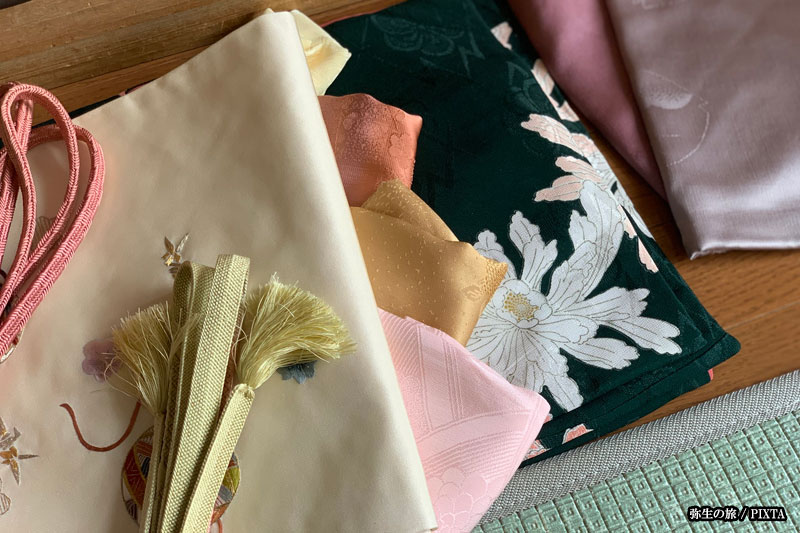
Photo for illustrative purposes
If you’ve ever imagined strolling through Kyoto in a flowing kimono or capturing breathtaking photos at a temple, you’re in for a treat. Let’s explore the key elements of kimono for men so you can dress and explore Japan like a local.
Haori (jacket)
The haori is a lightweight jacket worn over a kimono, adding both style and practicality. It was originally introduced as an additional layer for samurai. Today, it has evolved into a refined fashion statement, with aristocrats and commoners alike incorporating it into their attire. You can leave it open for a relaxed look or fasten it at the front using a haori himo, a decorative cord that adds a touch of refinement.
Hakama (trousers)
Few garments embody the essence of samurai culture like the hakama. These pleated, wide-legged trousers were originally worn by warriors. Over time, hakama became a staple in formal Japanese attire, often seen at weddings, tea ceremonies, and martial arts events. They are typically secured at the waist with long ties and can be worn over a regular kimono to create a structured, elegant look.
Yukata (summer kimono)
For a more relaxed and breathable alternative, the yukata is the ideal choice. Made from lightweight cotton or linen, yukata were traditionally worn after bathing in hot springs, but they have since become a common sight at summer festivals and fireworks displays. Unlike formal kimono, yukata do not require multiple layers or elaborate accessories, making them easier to wear and maintain.
Obi (kimono belt)
No kimono ensemble is complete without an obi, the wide belt that holds everything in place. Men’s obi are narrower and typically fastened in simple, functional knots. The style of the obi varies depending on the occasion—casual yukata are often secured with a soft, flowing heko-obi, while more formal kimono call for a stiff kaku-obi.
Eri (kimono collar)
The kimono collar may seem like a small detail, but it plays a crucial role in defining the overall look of the outfit. Men’s kimono collars are usually wider and folded neatly, creating a sharp neckline. The positioning of the collar can also indicate formality—higher, stiffer collars are associated with more formal settings, while a slightly looser, relaxed collar is common in casual wear.
Obiage (obi decoration)
Though it may not always be visible, the obiage is an important finishing touch in a traditional kimono outfit. This silk cloth, tucked into the top of the obi, helps secure it in place while adding a subtle layer of sophistication. Even though it remains mostly hidden, obiage elevates the overall aesthetic of a formal kimono.
Kanzashi (hair ornaments)
While kanzashi are more commonly associated with women’s hairstyles, men can also incorporate subtle hair accessories to complete their traditional look. Simple wooden or metal hairpins can add a refined touch, particularly for those wearing their hair in a traditional chonmage (topknot) style.
Footwear: the foundation of traditional attire
Footwear plays a crucial role in completing a traditional kimono for men ensemble. Traditional Japanese footwear comes in various styles, each suited to different occasions and levels of formality:
- Tabi: One of the defining elements of traditional Japanese footwear is tabi, the split-toe socks. Unlike regular socks, tabi have a separation between the big toe and the rest of the toes, allowing them to be worn with traditional sandals. They are typically white, but you can also choose casual variations in black, blue, or patterned designs.
- Zōri: Among traditional sandals, zori are the most commonly worn with men’s kimono. These flat-soled sandals were historically crafted from woven straw or lacquered wood, but modern versions often incorporate leather or synthetic materials for added comfort. Unlike Western footwear, zori encourages a gentle, shuffling walk, which complements the flowing silhouette of a kimono.
- Geta: For a more rustic and casual option, geta are a unique alternative to zori. These wooden sandals are elevated on two or three ha (teeth), giving them a distinctive clacking sound when worn. Originally designed to keep feet dry and clean on muddy streets, geta are now mostly associated with summer festivals and yukata. They are typically worn barefoot or with casual tabi.
How to wear a kimono: a step-by-step guide
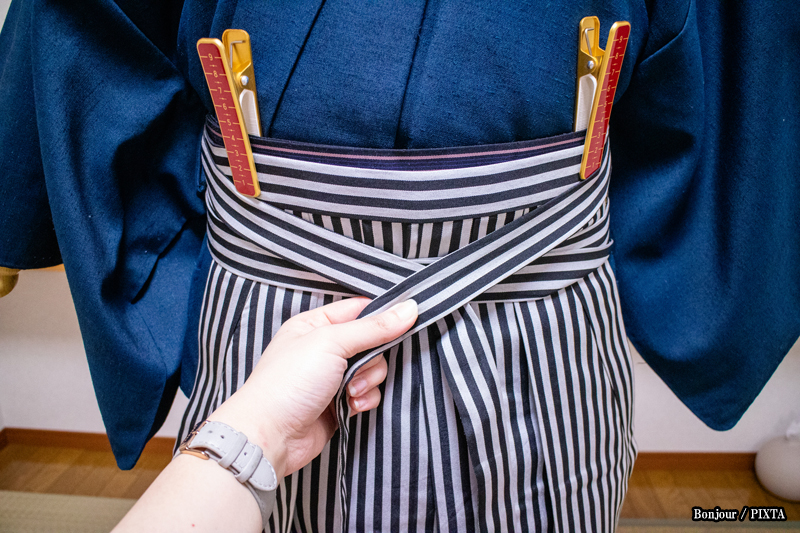
Photo for illustrative purposes
Now that you know all about the essential parts of a kimono, the only question remaining is how to wear it. Wearing a kimono for men is an art that blends tradition, precision, and elegance. While it may seem intricate at first, you can master the process in minutes!
Step 1: Wear the right undergarments
Before putting on a kimono, wear the proper undergarments. For men, this usually includes a simple hadajuban (kimono undergarment) and fundoshi (traditional underwear) or modern briefs. These layers help keep the kimono clean and make it more comfortable to wear.
Step 2: Put on the kimono
Drape the kimono over your shoulders, ensuring that the seams align with your body. The left panel should always wrap over the right—this is a crucial detail, as kimonos are wrapped right over left only for the deceased in funerary traditions. Adjust the length so that it reaches your ankles, keeping the fabric smooth and even.
Step 3: Secure with the obi
The obi is the key to keeping the kimono in place. Choose a narrower obi and tie it around the waist or slightly below it. The kainokuchi (simple knot) is a common and practical style for men. If you are attending a formal occasion, you may also add an obiage for an extra touch of refinement.
Step 4: Add the haori and haori himo (kimono cord)
For a polished look, wear a haori over the kimono. Fasten the haori with a haori himo (kimono cord). The length and design of the haori vary, with more subdued styles suited for formal settings and patterned ones ideal for casual outings.
Step 5: Wear the proper footwear
Pairing the kimono with the right footwear completes the ensemble. Wear your traditional tabi with either zori or geta sandals, depending on the occasion. Zori are the preferred choice for formal events, while geta add a relaxed touch, perfect for summer festivals or casual strolls.
Step 6: Adjust the collar and sleeves
Make sure your eri sits neatly around the neck, with a slight gap at the back for a refined appearance. Men’s kimono sleeves are shorter and attached to the body for ease of movement. Checking these final details ensures that the kimono looks well-fitted and elegant.
Step 7: Walk with grace
Unlike Western clothing, kimonos encourage slower, more deliberate movements. When walking, take slightly shorter steps to maintain the kimono’s graceful drape. This is particularly important if you’re wearing a hakama, which require careful movement to avoid stepping on the fabric.
Renting and buying kimono: a practical guide
If you’re visiting Japan, you’ll find plenty of options for renting and buying kimonos. Here’s what you need to know:
Renting a kimono: a convenient option for travelers
For sightseeing, renting is the easiest way to experience the elegance of a traditional kimono for men. Rental shops offer full sets, including accessories, styling assistance, and dressing services.
- Popular Cities for Kimono Rentals: Kyoto, Tokyo (Asakusa), Kanazawa, Nara
- Cost: 4,000–10,000 JPY for a full day
- Process: Choose your style, get dressed by professionals, enjoy sightseeing, and return it at the end of the day!
Buying a kimono: a timeless investment
If you fall in love with wearing a kimono, purchase one to own a piece of Japanese kimono culture and history. Kimonos are available at a variety of places, including specialty kimono stores, department stores, and even second-hand shops that offer vintage pieces with character and history.
Prices vary widely depending on the material and craftsmanship. A simple yukata can start at around 15,000 JPY, while a high-quality formal silk kimono can easily exceed 50,000 JPY due to the meticulous artistry involved in its creation.
When investing in a kimono, it’s important to consider fabric quality, the occasion it will be worn for, and how to properly store it. Also, keep in mind that silk kimonos require careful maintenance, including proper folding and storage in breathable fabric bags to prevent damage. Cotton or synthetic options, on the other hand, are easier to care for and may be a better choice for casual wear.
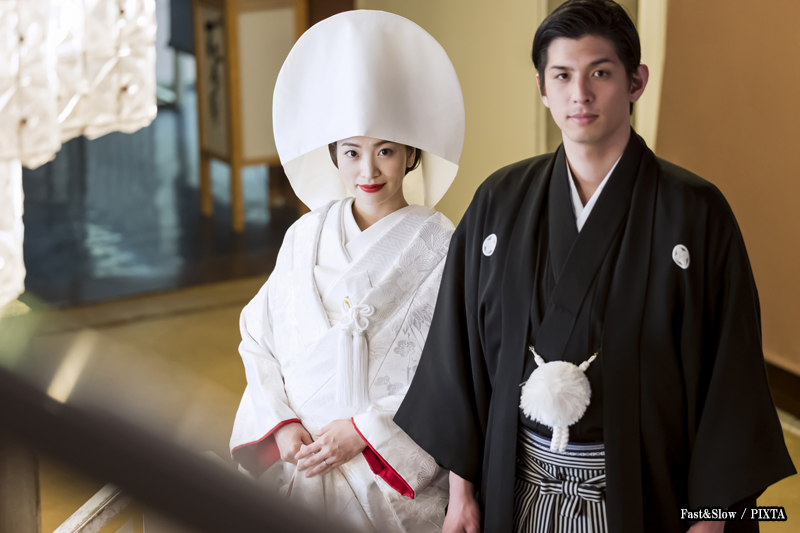
Photo for illustrative purposes
Wearing a kimono for men isn’t just about style—it’s about embracing the rich heritage of Japan. Whether you opt for a casual yukata for summer festivals or a formal kimono with haori and hakama for a formal wedding ceremony, the experience of dressing traditionally is unforgettable.
As you stroll through historic streets in your traditional kimono for men, you’ll not only feel connected to Japan’s past but also add a new dimension to your travels. So, the next time you visit Japan, don’t just observe the culture—wear it.

